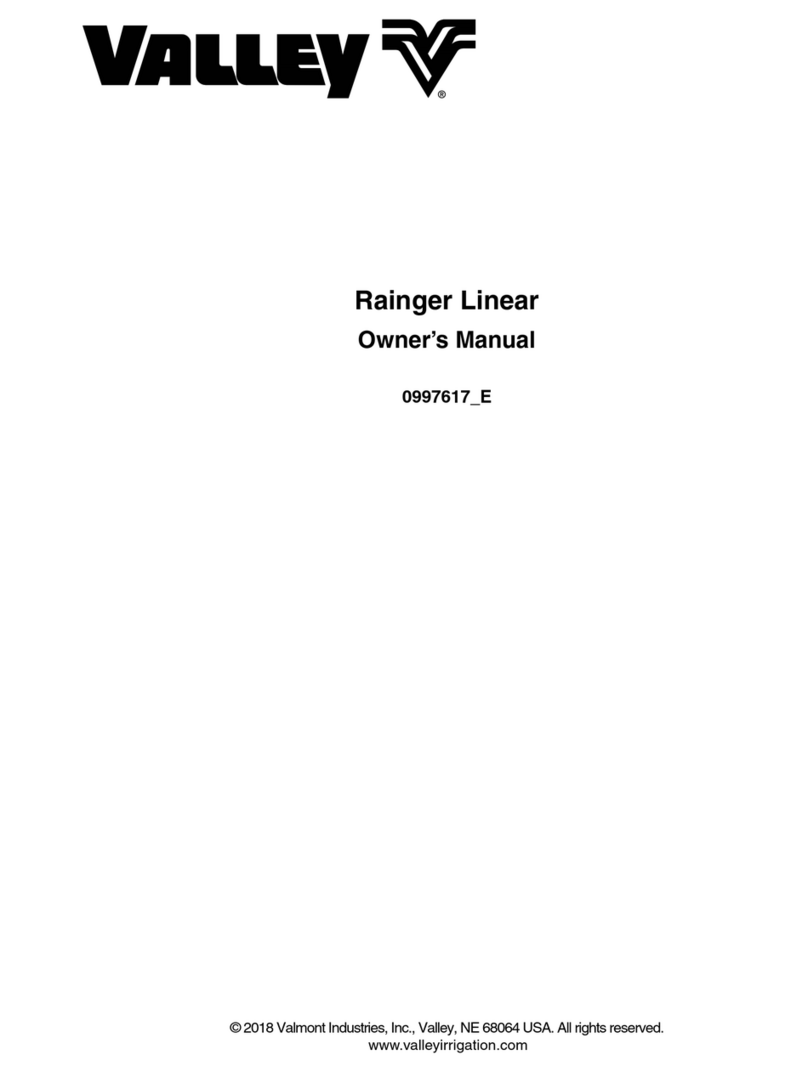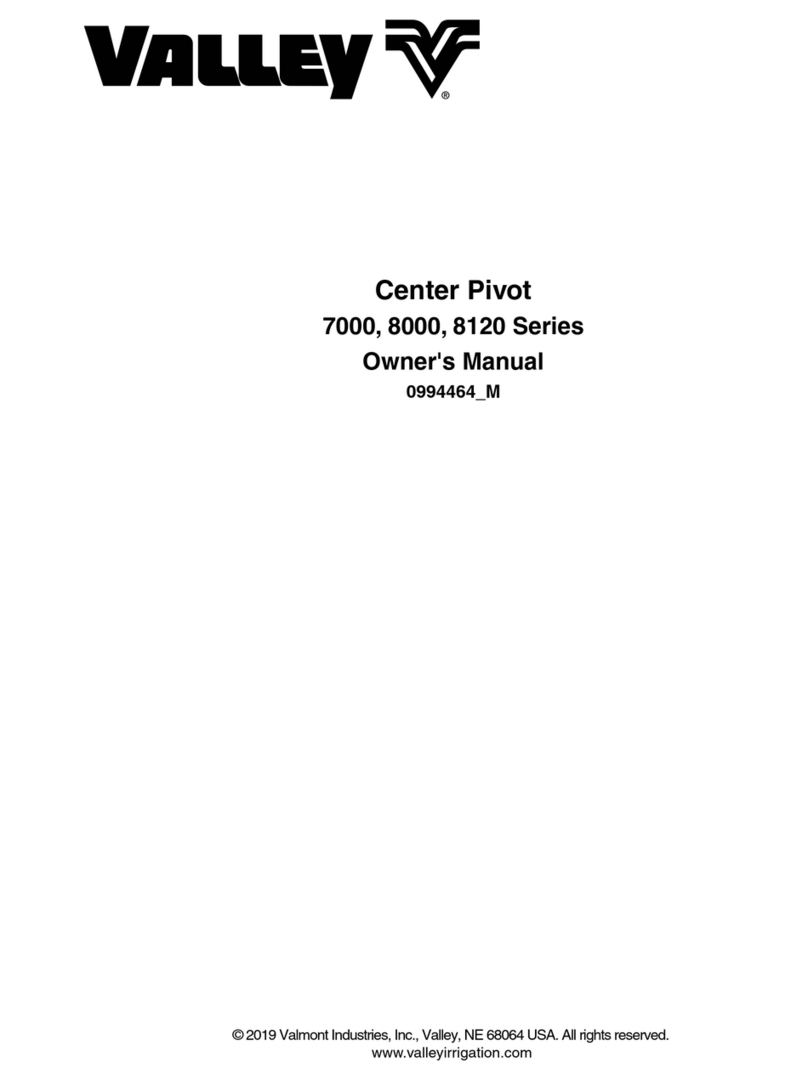
3
Table of Contents
VFlex Corner Sequencing Control Panel Owner's Manual ........................................................................... 1
Table of Contents ............................................................................................................................................. 3
EC Declaration of Conformity.......................................................................................................................... 5
Electrical Safety Statement ............................................................................................................................. 6
Installation Of The Valley Electric Irrigation Machine - European Union Only ............................................ 6
About This Manual ........................................................................................................................................... 6
Ancillary Equipment Warranty ........................................................................................................................ 6
Safety................................................................................................................................................................. 7
Recognize Safety Information............................................................................................................................. 7
Safety Messages........................................................................................................................................... 7
Information Messages ................................................................................................................................... 7
Use Of Personal Protective Equipment .............................................................................................................. 8
Conductive Materials And Equipment ................................................................................................................ 8
Fall Protection..................................................................................................................................................... 8
Minimum Working Clearance.............................................................................................................................. 9
Qualified Person ................................................................................................................................................. 9
Overhead Power Lines ..................................................................................................................................... 10
Minimal Lockout / Tagout Procedure................................................................................................................. 11
Sequence Of Lockout .................................................................................................................................. 11
Restoring Equipment To Service ................................................................................................................. 11
Safety............................................................................................................................................................... 12
Operate Safely.................................................................................................................................................. 12
Safety Decals ................................................................................................................................................... 14
Overview.......................................................................................................................................................... 17
VCS Control Panel ........................................................................................................................................... 17
Term Definitions:.......................................................................................................................................... 17
Corner Identification ......................................................................................................................................... 18
Standard (Trailing) Corner ................................................................................................................................ 18
Inverted (Leading) Corner ................................................................................................................................ 18
Main Status Menu............................................................................................................................................. 19
Time ............................................................................................................................................................ 19
Corner Angle (CANGLE)............................................................................................................................. 19
Error Code (Exx) ......................................................................................................................................... 19
Speed.......................................................................................................................................................... 19
Date............................................................................................................................................................. 19
Machine Angle (MANGLE) .......................................................................................................................... 19
Adjusted Speed........................................................................................................................................... 19
SOL# ........................................................................................................................................................... 19
TEN+ ........................................................................................................................................................... 19
Function Keys................................................................................................................................................... 20
Home Key.................................................................................................................................................... 20
Diagnostics Key........................................................................................................................................... 20
Program Key ............................................................................................................................................... 20
Options Key ................................................................................................................................................. 20
Pressure...................................................................................................................................................... 20
Direction ...................................................................................................................................................... 20
End Gun (EG).............................................................................................................................................. 20
Solenoid Numbers....................................................................................................................................... 20
Modes.......................................................................................................................................................... 20
Numeric Entry Keys.......................................................................................................................................... 21
Decimal Point Key ....................................................................................................................................... 21
Minus Sign Key............................................................................................................................................ 21
Escape Key ................................................................................................................................................. 21
Number Keys............................................................................................................................................... 21





























